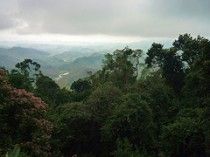Kenya are happy to be in the REDD
The second phase of a REDD+ project to combat deforestation in Kenya has been approved. It aims to prevent the emissions of greenhouse gases amounting to 1m tonnes of CO2 per year over the next 30 years in Kenya alone.

 UNEP said in a recent report that “Financing tree projects that create carbon credits can be profitable, reduce risk portfolio diversification, and cheapen compliance costs for emitters.”
UNEP said in a recent report that “Financing tree projects that create carbon credits can be profitable, reduce risk portfolio diversification, and cheapen compliance costs for emitters.”
The United Nations' enhanced Reducing Emissions from Deforestation and Forest Degradation (REDD+) programme is currently giving support to 13 countries, including Zambia, Tanzania, the Democratic Republic of Congo and Kenya.
The U.S. conservation company, Wildlife Works Carbon said it received a second consignment of carbon credits in the battle to safeguard forests in Kenya and to decrease carbon footprint in forests around the world.
The second part of the project covers 500,000 acres of Kenyan forest, which belongs to 4,000 landowners. In return for commitment not to cut trees they will receive carbon credit rights known as Voluntary Carbon Units (VCUs), entitling them to money from governments and international organisations.
The first phase began in February in the Kasigau Corridor which functions as a critical wildlife corridor between two national parks.
The aim of REDD+ is to achieve the international third-party certification under the Verified Carbon Standard (VCS) and the Climate, Community and Biodiversity Standard (CCB).
Recently, the REDD+ system that pays people in developing countries not to cut trees is said to be “plagued by leakage” — trees in the supervised areas are not being cut but the same people who receive the REDD+ funds cut trees in unsupervised forests.
Brendan Fisher, an environmental economist at Princeton University in New Jersey said that the reason for this was that carbon payments simply compensated people for the money they would lose by not converting forest to farmland. This fell short of people's needs.
He said It does not take into account “the one-third of newly converted land value that comes from charcoal production.”
“Local people would be plunged into further poverty because they would be unable to replace the resources the land would have provided.”
In response the project has launched the “Smart-REDD Plan” which will not only pay landowner to not cut trees, but also for monitoring forests.
As an act of commitment, South Africa’s Nedbank Group, which provided support to phase one of the REDD+, signed a similar arrangement yesterday 31 May, and bought 1.16 million VCUs from the project with options to buy more in the near future.
In April, REDD+ announced that it completed the double certification of its pilot project in Tasmania, Australia.
One official said that despite the success of phase one the project remains a “balancing act”, trying to advance conservation while trying to seize the opportunity to “clean the house.”
Image: EffervescingElephant | Flickr






